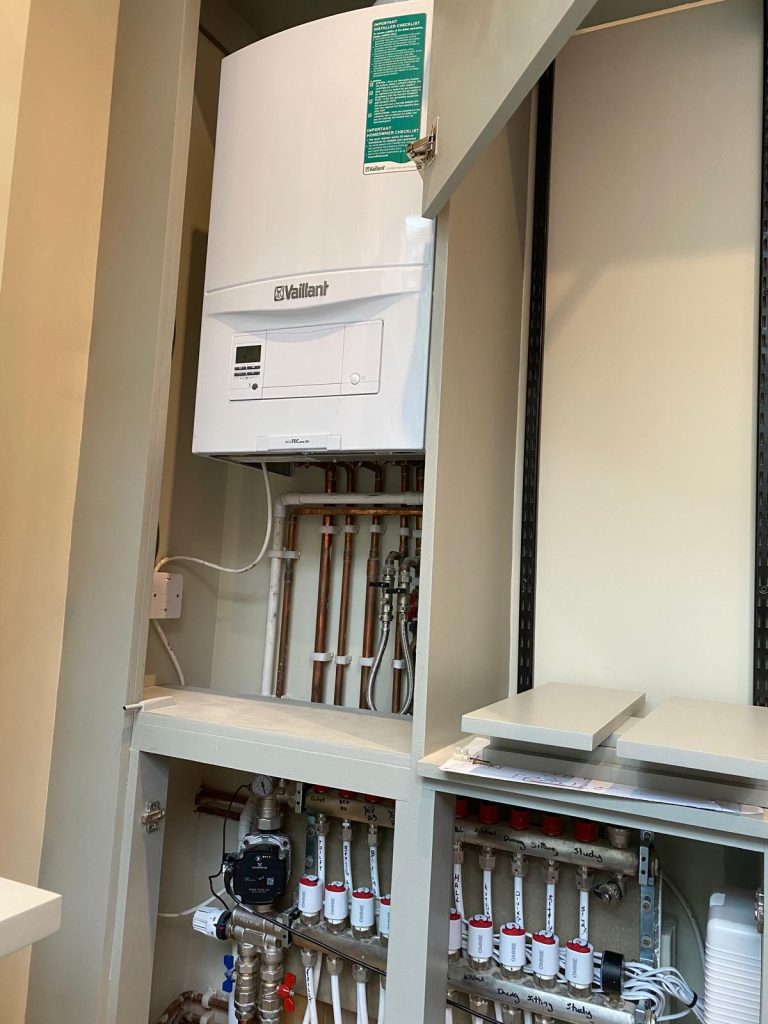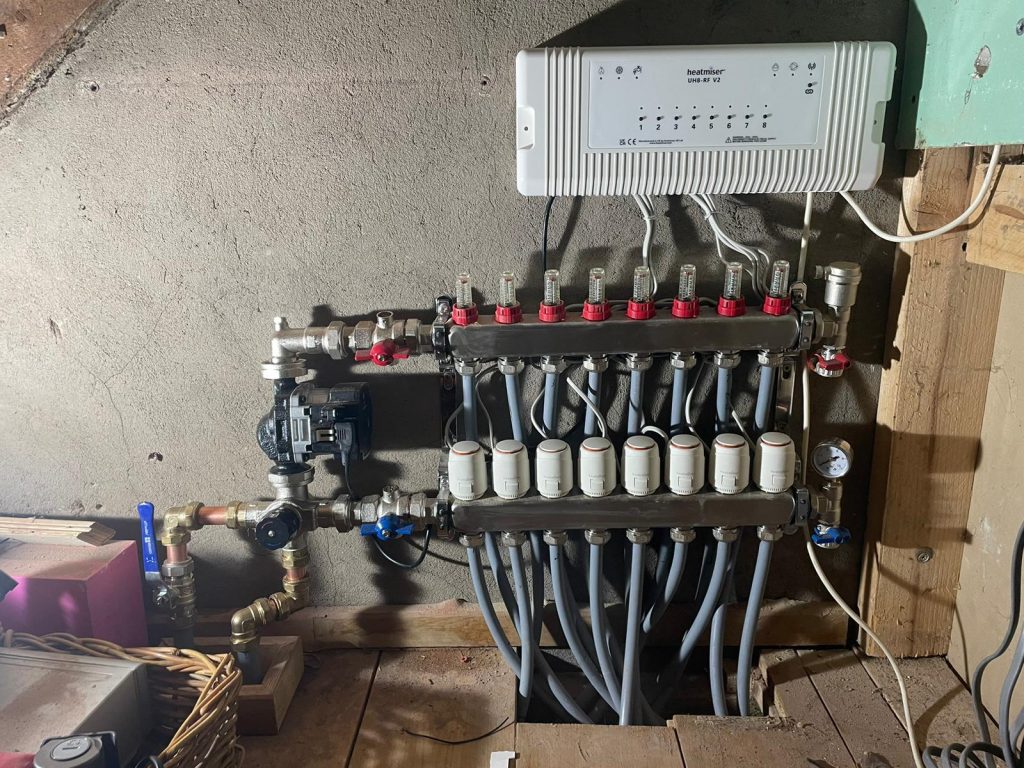Underfloor heating is a modern, efficient way to keep your home warm during the colder months — and it’s becoming increasingly popular in London properties. But if you’ve noticed that your underfloor heating keeps switching off unexpectedly, it can be both frustrating and uncomfortable, especially in the middle of winter.
In this guide, we’ll explore the most common reasons why your underfloor heating might be turning itself off, how to troubleshoot the problem, and when to call in a professional repair service.
How Underfloor Heating Works — A Quick Refresher
Before diving into the causes, it helps to understand the basics of how underfloor heating operates. There are two main types:
- Electric (Dry) Systems – These use electric cables or mats installed under the floor surface. They are controlled by a thermostat and heat up relatively quickly.
- Water-Based (Wet) Systems – These circulate warm water through pipes embedded in the floor. They connect to your boiler or heat pump and are often managed through a manifold and thermostatic controls.
In both cases, the system relies on consistent power or water flow and accurate thermostat control to maintain the desired temperature. If one of these components fails or misbehaves, the system may keep switching off.
Common Reasons Your Underfloor Heating Switches Off
1. Thermostat Settings or Faults
The thermostat acts as the brain of your underfloor heating system. If it’s not programmed correctly, or if it’s faulty, it may be telling the system to turn off prematurely.
- Incorrect temperature settings – If your thermostat is set lower than the current room temperature, it won’t activate the system for long.
- Faulty thermostat sensor – A broken sensor can misread the room temperature, thinking it’s warmer than it is.
- Timer issues – Many thermostats have timer functions. If yours is set for short heating periods, it may switch off sooner than expected.
Quick fix: Check your thermostat’s settings and schedule. If it’s a wireless thermostat, ensure the batteries are working. If the display is blank or erratic, it might be time for a replacement.

2. Electrical Supply Problems
For electric underfloor heating systems, any interruption to the power supply can cause the system to switch off.
- Loose connections – Over time, wiring can loosen, especially in older installations.
- Tripped circuit breakers – A sudden surge can trip your RCD (Residual Current Device) or fuse.
- Damaged cables – If floor work has been done recently, heating cables may have been damaged.
Quick fix: Check your fuse box to see if a breaker has tripped. If it has, reset it — but if it trips again, stop and call an engineer.
3. Water Flow or Boiler Issues (Wet Systems)
If you have a water-based underfloor heating system, a problem with your boiler, pump, or water circulation can cause the system to turn off.
- Low boiler pressure – Without adequate pressure, hot water can’t circulate properly.
- Pump failure – If the circulation pump is faulty, water won’t flow through the pipes.
- Airlocks – Trapped air in the system can stop water from moving efficiently, triggering an automatic shutdown.
Quick fix: Check your boiler pressure gauge — it should usually be around 1–1.5 bar. If it’s low, top it up following your boiler manual. Bleeding the underfloor heating circuit may also help remove airlocks.
4. Overheating Protection
Many systems have built-in safety features to prevent overheating. If a sensor detects excessive heat, the system will automatically shut down.
- Blocked heat flow – Placing thick rugs or furniture directly over the heating area can trap heat.
- Faulty temperature sensor – A malfunctioning sensor may falsely detect overheating.
Quick fix: Remove rugs or furniture from the heated zone and see if the problem persists. If it does, the sensor may need replacing.
5. Component Wear and Tear
Like all home systems, underfloor heating parts wear out over time.
- Actuator failure – In wet systems, actuators control water flow to each zone. If they fail, heating may stop.
- Manifold valve issues – These valves regulate flow and can get stuck.
- Old cabling – In electric systems, insulation breakdown can cause intermittent faults.
Quick fix: This often requires professional diagnosis. Engineers use tools like thermal imaging to pinpoint faults under the floor without ripping it up.
Troubleshooting Checklist for Homeowners
Before calling a professional, you can run through this quick checklist:
- Check thermostat settings – Is it set correctly for temperature and schedule?
- Inspect power supply – Has a fuse tripped or breaker reset?
- Look for visible damage – Any recent floor work that could have damaged cables or pipes?
- Check boiler pressure (for wet systems) – Is it in the recommended range?
- Remove heat-blocking items – Rugs or heavy furniture covering the heated floor?
If you’ve checked all of the above and your underfloor heating still keeps switching off, it’s time to book a professional inspection.
When to Call a Professional in London
While some issues are simple to fix, others require specialist tools and expertise. Here’s when you should call in a qualified underfloor heating repair engineer:
- Persistent faults despite thermostat resets or power checks
- Frequent circuit breaker trips — could indicate dangerous wiring issues
- Boiler-related faults affecting other parts of your heating system
- Leaks or damp patches suggesting water-based system issues
- Cold zones that don’t respond to basic troubleshooting
In London, many underfloor heating systems are installed in apartments or renovated properties with limited access to the subfloor. Professional engineers use non-invasive diagnostic tools like thermal imaging cameras, digital multimeters, and pressure testers to pinpoint the fault without damaging your flooring.
Preventing Your Underfloor Heating from Switching Off
Prevention is always better than cure. Here are a few maintenance tips:
- Annual servicing – Have your system checked by a professional before winter.
- Thermostat calibration – Ensure your thermostat is reading the correct temperature.
- Keep the floor clear – Avoid thick rugs or heavy furniture over heated zones.
- Boiler checks – Maintain correct pressure and service your boiler regularly.
- Monitor system performance – If you notice uneven heating, deal with it early before it worsens.

Why London Homes Need Special Attention
London’s housing stock is unique — with a mix of Victorian terraces, post-war flats, and modern apartments, underfloor heating installations vary widely. Some are retrofitted with electric mats, while others are integrated into new builds with water-based systems.
Older properties may have less efficient insulation, meaning underfloor heating works harder and parts wear out faster. Flats in high-rise buildings may have shared boiler systems, making repairs more complex.
That’s why it’s essential to hire a London-based underfloor heating repair service familiar with local building layouts, regulations, and system types.
Final Thoughts
If your underfloor heating keeps switching off, it’s often due to thermostat issues, electrical faults, water flow problems, or safety shutdowns. While some fixes are straightforward, others require professional diagnosis to avoid further damage or safety hazards.
For London homeowners, having a reliable underfloor heating repair engineer on call can save you from cold mornings and costly breakdowns.
